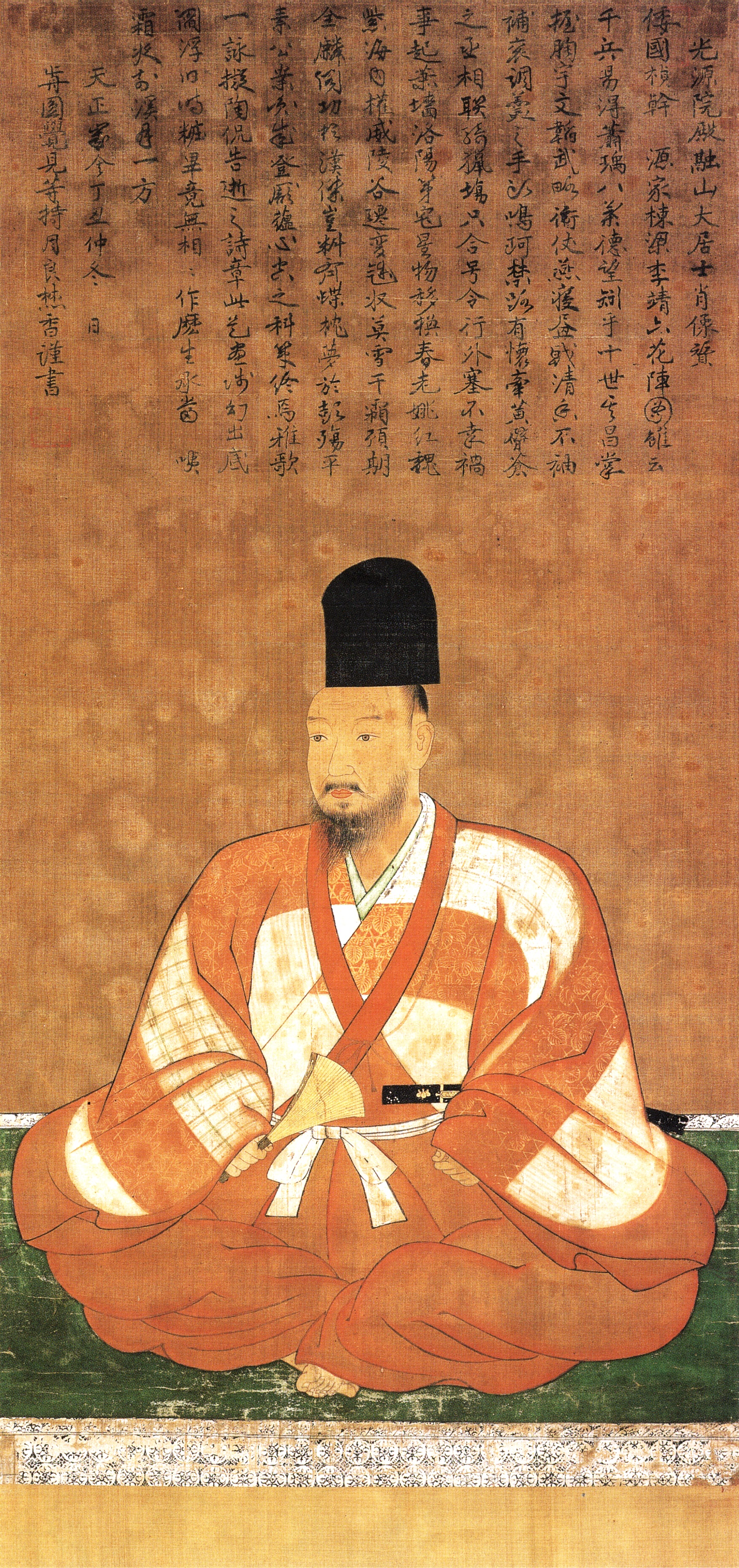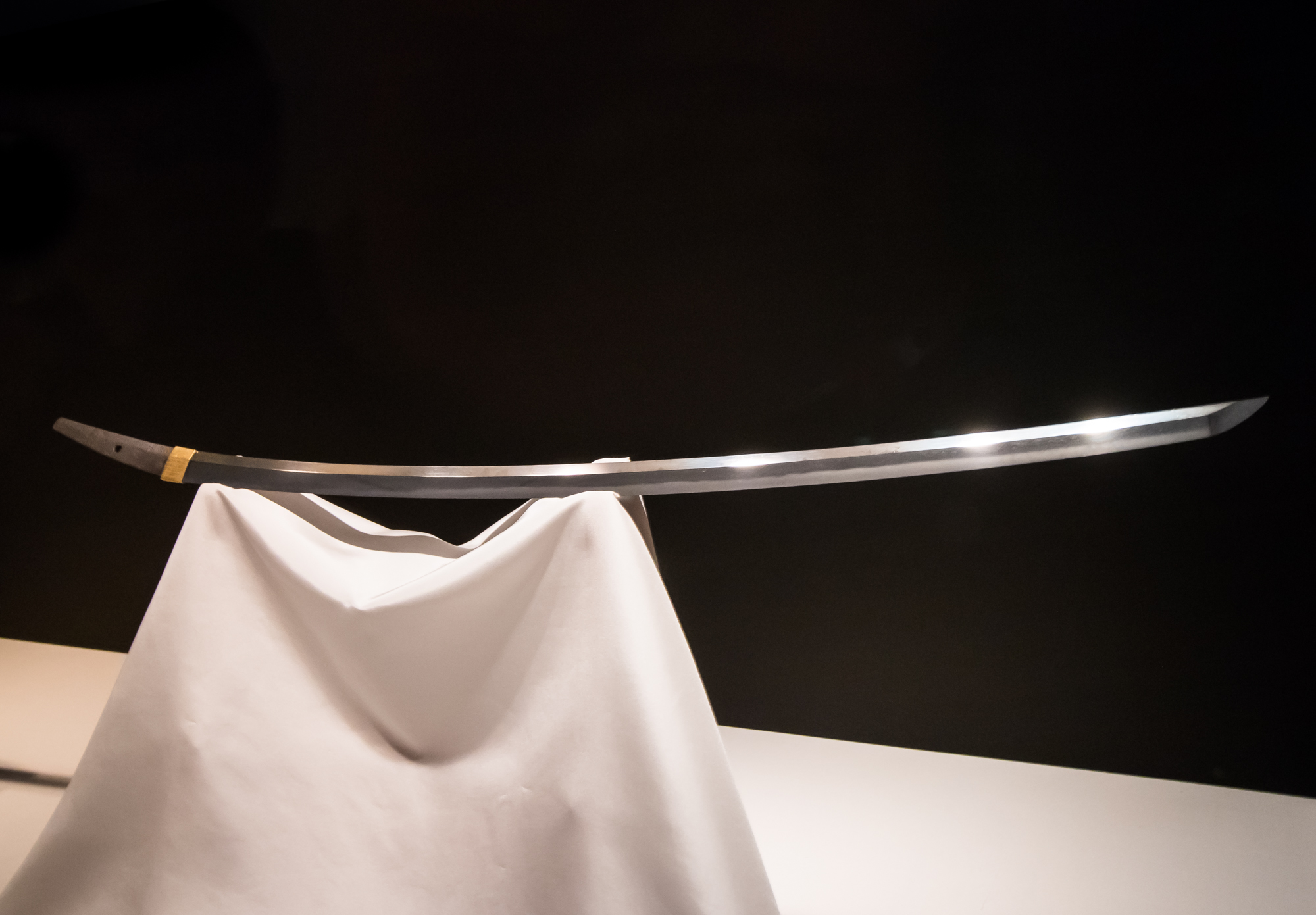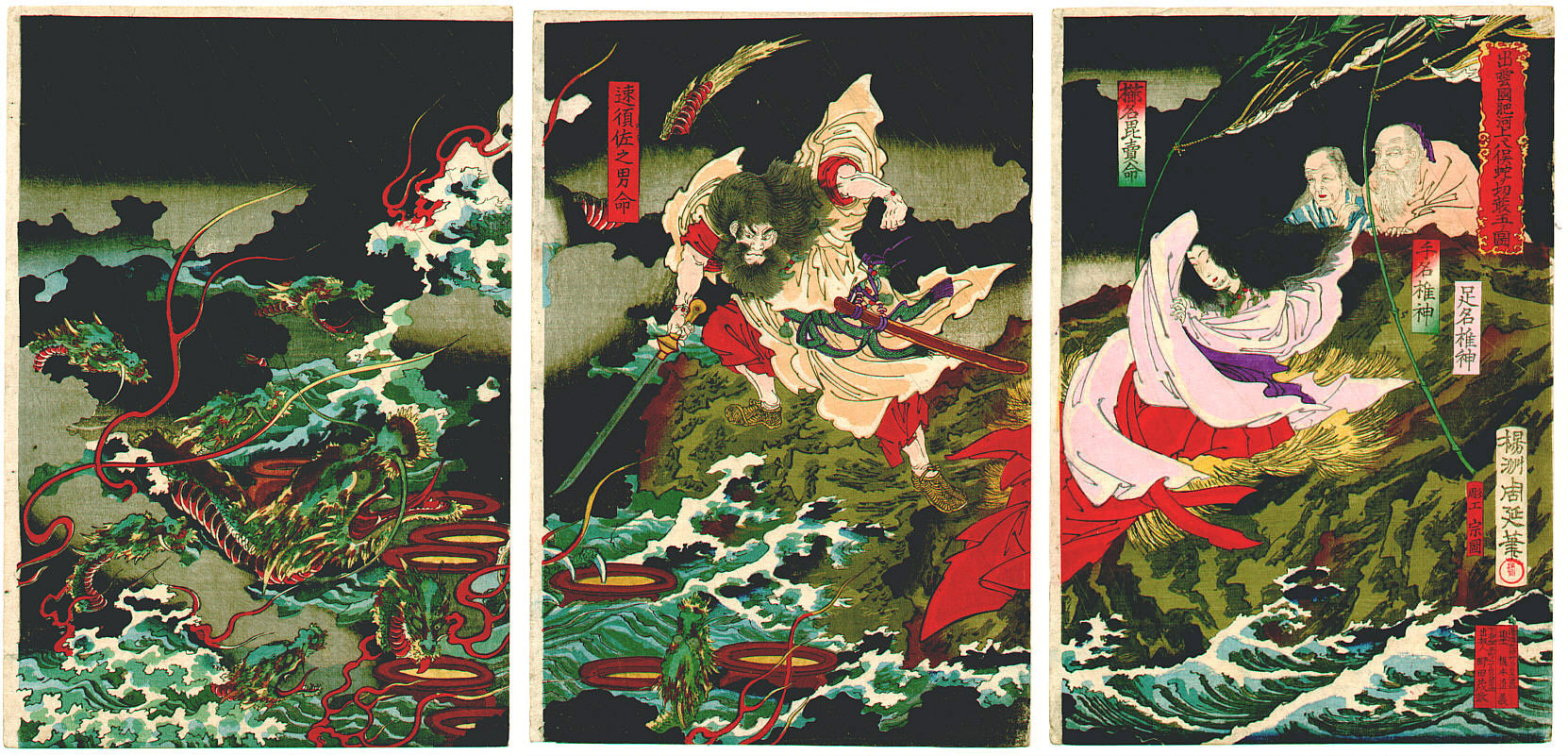|
Tenka-Goken
The are a group of five Japanese swords. Three are National Treasures of Japan, one an Imperial Property, and one a holy relic of Nichiren Buddhism. Among the five, some regard Dōjigiri as "the yokozuna of all Japanese swords" along with Ōkanehira ( :ja:大包平).Sato, 1990. pp. 116–117. Origin As of 2017, the term is widely-recognized among Japanese sword connoisseurs. For example, the national institute uses the word in an explanation for Mikazuki. Although some researchers claim the term dates back to the Muromachi period (1333–1573), its origin is unknown. Suiken Fukunaga cites a book written in the fifth year of Genroku (1692–1693),Fukunaga, 1993. vol. 3, p. 302 and vol. 5, p. 379. so the term is traceable back to at least the late 17th century if the citation is to be believed. Kanzan Sato commented, in terms of pure quality from the viewpoint of modern sword connoisseurs, although they are undoubtedly five of the greatest swords, it is doubtful whether they are ' ... [...More Info...] [...Related Items...] OR: [Wikipedia] [Google] [Baidu] |
Ashikaga Yoshiteru
, also known as Yoshifushi or Yoshifuji, was the 13th ''shōgun'' of the Ashikaga shogunate who reigned from 1546 to 1565 during the late Muromachi period of Japan. He was the eldest son of the 12th ''shōgun'', Ashikaga Yoshiharu, and his mother was a daughter of Konoe Hisamichi (later called , ''Keijuin''). When he became shogun in 1546 at age 11, Yoshiteru's name was Yoshifushi (sometimes transliterated as Yoshifuji); but some years later in 1554, he changed his name to the one by which he is conventionally known today. His childhood name was Kikubemaru (). His younger brother Ashikaga Yoshiaki became the fifteenth ''shōgun''. Installed as ''shōgun'' After his father, Yoshiharu, was forced to retire in 1546 over a political struggle with Hosokawa Harumoto, Yoshiteru became '' Sei-i Taishōgun'', albeit a puppet ''shōgun'' like his father. Yoshiteru was only 11 at the time and his investiture ceremony was held at Sakamoto, Ōmi Province, outside Kyoto. Yoshiteru had ba ... [...More Info...] [...Related Items...] OR: [Wikipedia] [Google] [Baidu] |
Tachi
A is a type of sabre-like traditionally made Japanese sword (''nihonto'') worn by the samurai class of feudal Japan. ''Tachi'' and '' uchigatana'' ("''katana''") generally differ in length, degree of curvature, and how they were worn when sheathed, the latter depending on the location of the , or signature, on the tang. The ''tachi'' style of swords preceded the development of the ''katana'', which was not mentioned by name until near the end of the twelfth century. ''Tachi'' were the mainstream Japanese swords of the Kotō period between 900 and 1596. Even after the Muromachi period (1336–1573), when ''katana'' became the mainstream, ''tachi'' were often worn by high-ranking samurai. History The production of swords in Japan is divided into specific time periods: * (ancient swords, until around 900) * (old swords, around 900–1596) * (new swords, 1596–1780) * (new new swords, 1781–1876) * (modern or contemporary swords, 1876–present) The predecessor ... [...More Info...] [...Related Items...] OR: [Wikipedia] [Google] [Baidu] |
Dōjigiri
Dōjigiri (童子切, "Slayer of Shuten-dōji") is a ''tachi''-type Japanese sword that has been identified as a National Treasure of Japan. This sword is one of the "Five Swords Under Heaven" (天下五剣 Tenka-Goken). Dōjigiri is sometimes called "the yokozuna of all Japanese swords" along with Ōkanehira ( :ja:大包平) because of its perfection; it is of great historical value as one of the oldest extant katana-type weapons. The quality and the artistic value of the blade is exquisite, it has been kept in good preservation, and the legend tied to the sword is notable. Anatomy The present mounts of the Dojigiri are fine examples of Momoyama-period work in itomaki no tachi style, in which the typical wrapping of the hilt continues along part of the scabbard. The scabbard is decorated in gold nashiji (gold flakes suspended in transparent lacquer) and the metal fittings are of shakudo (a blue-black alloy of copper with a small percentage of gold) worked with a nanako ... [...More Info...] [...Related Items...] OR: [Wikipedia] [Google] [Baidu] |
Katana
A is a Japanese sword characterized by a curved, single-edged blade with a circular or squared guard and long grip to accommodate two hands. Developed later than the ''tachi'', it was used by samurai in feudal Japan and worn with the edge facing upward. Since the Muromachi period, many old ''tachi'' were cut from the root and shortened, and the blade at the root was crushed and converted into a ''katana''. The specific term for ''katana'' in Japan is and the term ''katana'' (刀) often refers to single-edged swords from around the world. Etymology and loanwords The word ''katana'' first appears in Japanese in the ''Nihon Shoki'' of 720. The term is a compound of ''kata'' ("one side, one-sided") + ''na'' ("blade"),1995, (''w:Daijisen, Daijisen'') (in Japanese), w:Tōkyō, Tōkyō: w:Shogakukan, Shogakukan, , entry available onlinhere/span> in contrast to the double-sided ''Tsurugi (sword), tsurugi''. The ''katana'' belongs to the ''nihontō'' family of swords, and is ... [...More Info...] [...Related Items...] OR: [Wikipedia] [Google] [Baidu] |
Shuten-dōji
Shuten-dōji (, also sometimes called , or ) is a mythical ''oni'' or demon leader of Japan, who according to legend was killed by the hero Minamoto no Yorimitsu, Minamoto no Raikō. Although decapitated, the demon's detached head still took a bite at the hero, who avoided death by wearing multiple helmets stacked on his head. Shuten-dōji had his lair at Ōeyama (mountain range), Mount Ōe () northwest of the city of Kyoto, or Mount Ibuki, depending on the version. It has also been theorized that the original mountain was Ōeyama (mountain), Mount Ōe () on the western edge of the city of Kyoto. Texts The oldest surviving text of the legend is recorded in the 14th century ''Ōeyama Ekotoba'' (大江山絵詞 "Tale of Mount Ōe in Pictures and Words"), a picture scroll held by the Itsuō Art Museum. It was later incorporated into the corpus of ''Otogi-zōshi'' ("Companion tales"), and became widely read in the woodblock-printed versions of them called the ''Otogi Bunko'' (Compa ... [...More Info...] [...Related Items...] OR: [Wikipedia] [Google] [Baidu] |
Kusanagi-no-Tsurugi
is a legendary Japanese sword and one of three Imperial Regalia of Japan. It was originally called , but its name was later changed to the more popular ("Grass-Cutting Sword"). In folklore, the sword represents the virtue of Courage, valor. Legends The history of the extends into legend. According to , the god Susanoo encountered a grieving family of ("gods of the land") headed by in Izumo Province. When Susanoo inquired of Ashinazuchi, he told him that his family was being terrorized by the fearsome Yamata no Orochi, an eight-headed serpent of Koshi Province (Japan), Koshi, who had consumed seven of the family's eight daughters, and that the creature was coming for his final daughter, . Susanoo investigated the creature, and after an abortive encounter he returned with a plan to defeat it. In return, he asked for Kushinada-hime's hand in marriage, which was agreed. Transforming her temporarily into a comb (one interpreter reads this section as "using a comb he turns into ... [...More Info...] [...Related Items...] OR: [Wikipedia] [Google] [Baidu] |
Three Great Spears Of Japan
The Three Great Spears of Japan are three individual spears (yari) that were made and crafted by the greatest historical blacksmiths of Japan: # : This spear once wielded by Honda Tadakatsu, one of the great generals of Tokugawa Ieyasu. It was forged by Masazane, a disciple of Muramasa. It is now owned by a private individual and lent to the Sano Art Museum for its collection. The type of blade shape is ''sasaho yari''.Three Great Spears of Japan. The Nagoya Japanese Sword Museum “Nagoya Touken World” # : A famous spear that was once used in the Imperial Palace. Nihongo later found its way into the possession of , and then Tahe ... [...More Info...] [...Related Items...] OR: [Wikipedia] [Google] [Baidu] |
Minamoto No Yorimitsu
, also known as Minamoto no Raikō, was a Japanese samurai of the Heian period, who served the regents of the Fujiwara clan along with his brother Yorinobu, taking the violent measures the Fujiwara were themselves unable to take. He is one of the earliest Minamoto of historical note for his military exploits, and is known for quelling the bandits of Ōeyama. His loyal service earned him the governorships of Izu Province, Kozuke and a number of others in turn, as well as a number of other high government positions. Yorimitsu served as commander of a regiment of the Imperial Guard, and as a secretary in the Ministry of War. When his father Minamoto no Mitsunaka died, he inherited Settsu Province. Yorimitsu is usually accompanied by his four legendary retainers, known as the Shitennō (The Four Heavenly Kings). They were Watanabe no Tsuna, Sakata no Kintoki, Urabe no Suetake, and Usui Sadamitsu. Legends Yorimitsu is featured in a number of legends and tales, including the ... [...More Info...] [...Related Items...] OR: [Wikipedia] [Google] [Baidu] |
Maeda Toshiie
was one of the leading generals of Oda Nobunaga following the Sengoku period of the 16th century extending to the Azuchi–Momoyama period. His preferred weapon was a yari and he was known as "Yari no Mataza" (槍の又左), Matazaemon (又左衛門) being his common name. He was a member of the so-called Echizen Sanninshu (Echizen Triumvir) along with Sassa Narimasa and Fuwa Mitsuharu. The highest rank from the court that he received is the Great Counselor ''Dainagon'' ( 大納言). Early life His father was Maeda Toshimasa and his wife was Maeda Matsu. His childhood name was "Inuchiyo" (犬千代). Toshiie was born in the village of Arako (present-day Nakagawa-ku, Nagoya). He was the fourth of seven brothers, of Maeda Toshimasa, who held Arako Castle. Toshiie served Oda Nobunaga from childhood (first as a page) and his loyalty was rewarded by being allowed to be the head of the Maeda clan, very unusual for a fourth son with no apparent failures among his elder brothe ... [...More Info...] [...Related Items...] OR: [Wikipedia] [Google] [Baidu] |
Maeda Ikutokukai
The is a Japanese public interest corporation (公益法人) established on February 26, 1926, for the management and preservation of the cultural heritage of the Maeda clan, rulers of the Kaga Domain. It is located in Komaba, Meguro, Tokyo. The collection is centered on written materials including ancient documents or Japanese and Chinese books but also contains crafts items such as swords, armour or household items. The writings held by the foundation are known as which is also used as an alias for Maeda Ikutokukai. This collection of old books, ancient records and documents is open to researchers on request only. The library's name is derived from the personal book collection of the 5th ''daimyō'' of Kanazawa Domain, Maeda Tsunanori, known as , which is distinct from the ancestral collection. 22 National Treasures of Japan, National Treasures and 76 Important Cultural Properties of Japan are in possession of Maeda Ikutokukai. As the library does not have the display faciliti ... [...More Info...] [...Related Items...] OR: [Wikipedia] [Google] [Baidu] |
Taiheiki
The (Chronicle of Great Peace) is a medieval Japanese historical epic (see '' gunki monogatari'') written in the late 14th century and covers the period from 1319 to 1367. It deals primarily with the Nanboku-chō, the period of war between the Northern Court of Ashikaga Takauji in Kyoto, and the Southern Court of Emperor Go-Daigo in Yoshino. Original work The latest English translation consists of 12 chapters of the 40-chapter epic, and spans the period from Go-Daigo's accession in 1318 (when Takauji was still a minor vassal of the Kamakura shogunate's Hōjō clan), through Takauji's betrayal of the Hōjō, and Go-Daigo's fall and expulsion by Takauji in 1333, to his return to Kyoto in 1338. Go-Daigo, unlike many of the emperors before and after him, sought to supersede the power of the ''shōguns'', and to actually rule in addition to reigning in name. Thus began a series of battles, both military and political, as the Fujiwara family, who dominated the Imperial regency f ... [...More Info...] [...Related Items...] OR: [Wikipedia] [Google] [Baidu] |






